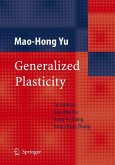Contents Recent advancements in the performance of industrial products and structures are quite intense. Consequently, mechanical design of high accuracy is necessary to enhance their mechanical performance, strength and durability. The basis for their mechanical design can be provided through elastoplastic deformation analyses. For that reason, industrial engineers in the fields of mechanical, civil, architec- ral, aerospace engineering, etc. must learn pertinent knowledge relevant to elas- plasticity. Numerous books about elastoplasticity have been published since "Mathema- cal Theory of Plasticity", the notable book of R. Hill (1950), was written in the middle of the last century. That and similar books mainly address conventional plasticity models on the premise that the interior of a yield surface is an elastic domain. However, conventional plasticity models are applicable to the prediction of monotonic loading behavior, but are inapplicable to prediction of deformation behavior of machinery subjected to cyclic loading and civil or architectural str- tures subjected to earthquakes. Elastoplasticity has developed to predict defor- tion behavior under cyclic loading and non-proportional loading and to describe nonlocal, finite and rate-dependent deformation behavior.
"This book gives an exhaustive explanation of elastoplasticity, which is intended to be understood easily and clearly not only by researchers but also by beginners in the field of applied mechanics, without reading any other book. ... The authors uses a clear and compact direct notation, and simple figures are helpful for understanding." (Albrecht Bertram, zbMATH 1318.74001, 2015)








